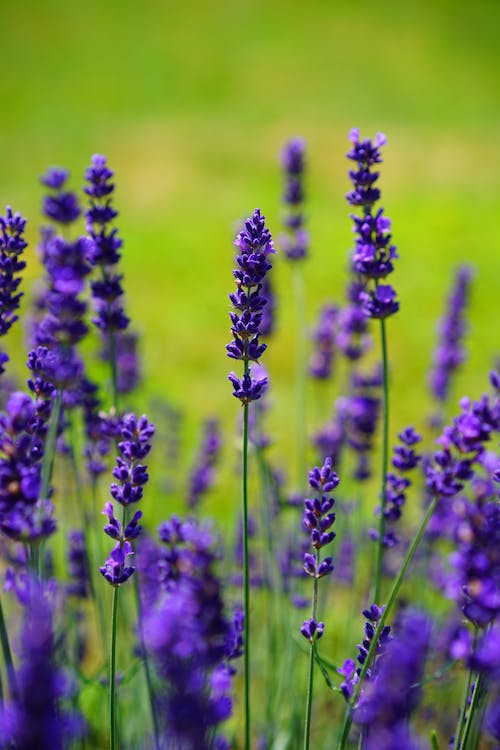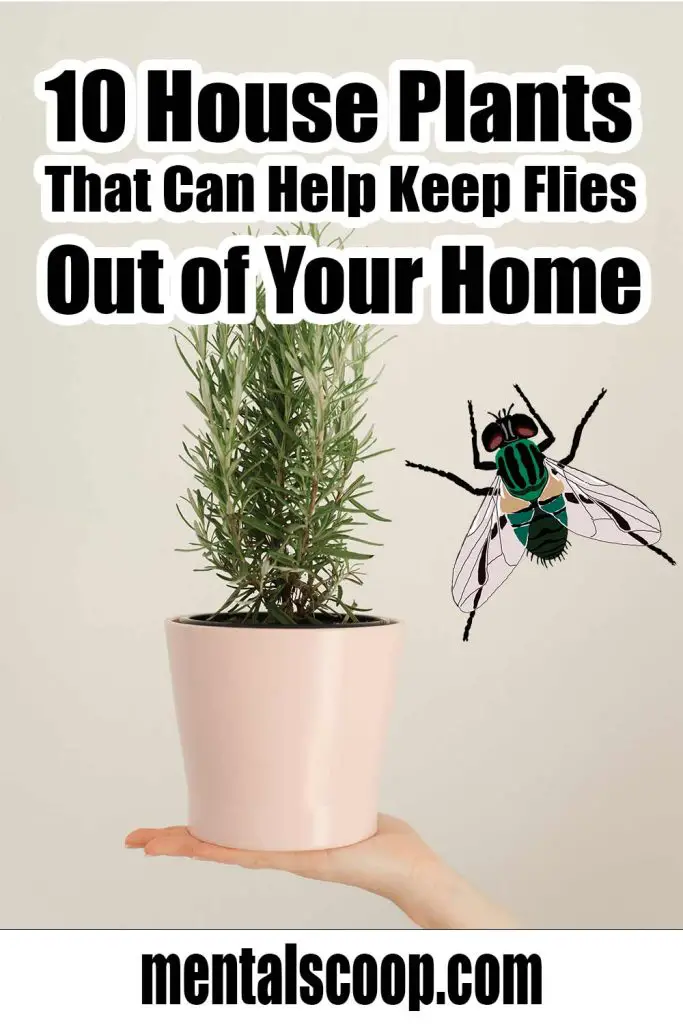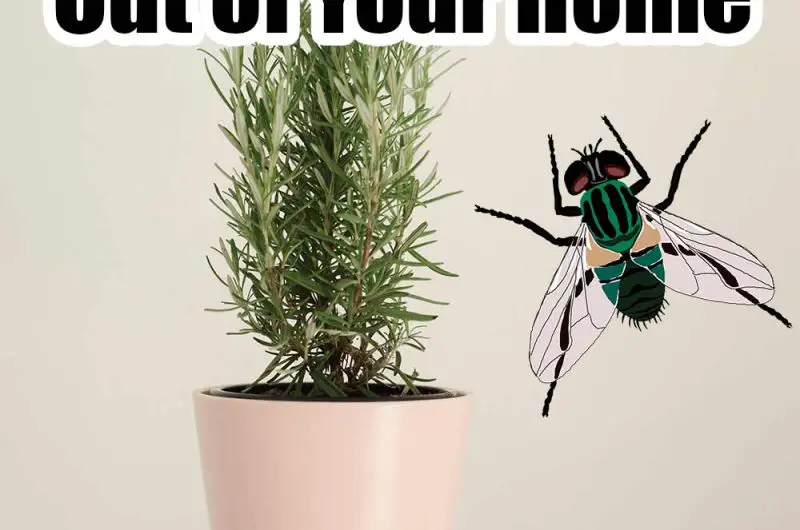10 House Plants That Can Help Keep Flies Out of Your Home

House plants not only add aesthetic value to your home, but they also have various health benefits. Indoor plants are known to improve air quality by removing harmful pollutants and toxins from the air. However, did you know that certain house plants can also keep flies away from your home?
Flies are pesky insects that can be a nuisance in any home. They are attracted to food, garbage, and decaying organic matter, and can spread diseases such as E. coli and Salmonella. Fortunately, there are several types of plants that can help keep flies at bay.
Venus Flytrap
The Venus Flytrap (Dionaea muscipula) is a carnivorous plant native to the wetlands of the southeastern United States, primarily found in North and South Carolina. The Venus Flytrap is a unique plant in that it is able to capture and digest insects for nutrients, rather than relying solely on photosynthesis like most other plants.
The Venus Flytrap has modified leaves that form a trap. The traps have two lobes with trigger hairs on the inside. When an insect touches the trigger hairs, the lobes snap shut, trapping the insect inside. The edges of the trap are lined with sharp teeth-like structures called cilia, which prevent the insect from escaping. Once the insect is trapped, the Venus Flytrap secretes enzymes that break down the insect, allowing the plant to absorb the nutrients.
In addition to being a fascinating plant, the Venus Flytrap is also a popular houseplant. However, it’s important to note that Venus Flytraps require specific growing conditions to thrive. They need a bright, sunny location and well-draining soil that is kept moist but not waterlogged. Additionally, they require a period of dormancy during the winter months, during which time they should be kept cool and dry.
While Venus Flytraps can help control the population of flies and other small insects, they are not a complete solution to a fly problem. They should be used in conjunction with other methods, such as proper sanitation practices and other natural fly repellents, to keep your home fly-free.
Pitcher Plants
Pitcher Plants, also known as Sarracenia, are a group of carnivorous plants that are found in wetlands and bogs throughout North America, particularly in the southeastern United States. These plants are known for their unique pitcher-shaped leaves that act as a trap for insects.
The leaves of Pitcher Plants are modified into a tube-like structure with a lid that forms a kind of ‘pitcher.’ The inside of the pitcher is lined with a slippery surface that makes it difficult for insects to climb out once they have fallen inside. Some species of Pitcher Plants also have downward-pointing hairs that prevent insects from climbing back up and escaping.
Pitcher Plants attract insects with a combination of scent, nectar, and color. Once an insect lands on the rim of the pitcher, it may slip and fall into the liquid at the bottom of the trap. The liquid inside the pitcher contains digestive enzymes that break down the insect, allowing the plant to absorb the nutrients.
Pitcher Plants come in a variety of sizes and shapes, with some species growing up to 3 feet tall. They require specific growing conditions, including full sun or partial shade and moist, acidic soil. Like the Venus Flytrap, they are carnivorous plants and should not be over-fertilized or watered with tap water, which can be too alkaline for their needs.
While Pitcher Plants can help control the population of flies and other small insects, they are not a complete solution to a fly problem. They should be used in conjunction with other methods, such as proper sanitation practices and other natural fly repellents, to keep your home fly-free.
Sundew
Sundews, also known as Drosera, are a group of carnivorous plants that are found in bogs and wetlands throughout the world, with the majority of species found in Australia and South Africa. These plants are known for their sticky, glandular leaves that act as traps for insects.
The leaves of Sundews are covered with tiny, hair-like structures that secrete a sticky, mucilaginous substance. When an insect lands on the leaf, the sticky substance traps it in place. The plant then secretes digestive enzymes that break down the insect, allowing the plant to absorb the nutrients.
Sundews come in a variety of sizes and shapes, with some species growing as small as a few inches tall and others growing up to 2 feet tall. They require specific growing conditions, including full sun and well-draining soil that is kept moist. Sundews are sensitive to mineral-rich water and require distilled or rainwater to avoid damage to their sensitive roots.
Sundews are effective at trapping and digesting small insects, including flies, mosquitoes, and gnats. They are also a popular houseplant and can be used to control small insect infestations indoors. However, like other carnivorous plants, they are not a complete solution to a fly problem and should be used in conjunction with other methods, such as proper sanitation practices and other natural fly repellents, to keep your home fly-free.
Basil
Basil (Ocimum basilicum) is a popular culinary herb that is used in a variety of cuisines around the world, including Italian, Thai, and Indian. In addition to its culinary uses, Basil has also been used for centuries for its medicinal properties.
Basil is an annual herb that is easy to grow and can be grown both indoors and outdoors. It is a member of the mint family and has a distinct aroma and flavor that is often described as sweet and slightly peppery. The leaves of the Basil plant are typically green, but some varieties have purple or red leaves.
Basil is rich in antioxidants and essential oils, which are believed to have a variety of health benefits. It has been shown to have anti-inflammatory properties and may help reduce the risk of certain types of cancer. Basil is also a good source of vitamin K, vitamin A, and vitamin C.
In addition to its culinary and medicinal uses, Basil is also known to repel flies and other insects. The scent of Basil is believed to be a natural insect repellent, which makes it a useful plant to have around the home, particularly in the kitchen.
To grow Basil, it is important to provide it with well-draining soil and plenty of sunlight. It is a relatively low-maintenance plant that requires regular watering, but it is important not to overwater, as this can lead to root rot. Basil can be grown from seed or propagated from cuttings, and it is easy to harvest and use in cooking.
Mint
Mint is a herb that is widely used for its refreshing aroma and flavor in a variety of dishes and beverages around the world. It is a member of the mint family, which also includes other popular herbs such as basil, oregano, and thyme.
Mint comes in several varieties, including spearmint, peppermint, and chocolate mint, each with its own unique flavor profile. The leaves of the mint plant are typically green and can be either smooth or hairy, depending on the variety.
Mint is known for its cooling and soothing properties, which make it a popular ingredient in products such as toothpaste, mouthwash, and skin care products. It is also used in traditional medicine to help relieve symptoms of indigestion and nausea.
In addition to its culinary and medicinal uses, mint is also known to repel flies and other insects. The scent of mint is believed to be a natural insect repellent, which makes it a useful plant to have around the home, particularly in the kitchen.
Mint is relatively easy to grow and can be grown indoors or outdoors. It prefers well-draining soil and partial shade, and it requires regular watering to thrive. Mint can be propagated from cuttings, and it is easy to harvest and use in cooking.
Lavender
Lavender is a fragrant and versatile herb that is widely used for its calming and soothing properties. It is a member of the mint family and is known for its distinctive floral aroma and beautiful purple flowers.
Lavender is native to the Mediterranean region and is now grown in many parts of the world, including Europe, Australia, and the United States. It is a hardy perennial plant that can grow up to 3 feet tall and requires well-drained soil and full sun to thrive.
Lavender is widely used in aromatherapy for its calming and relaxing properties. It is believed to help reduce stress and anxiety, improve sleep quality, and ease headaches and other physical discomforts. Lavender is also used in cosmetics and skincare products for its soothing and moisturizing properties.
In addition to its therapeutic uses, lavender is also known to repel flies and other insects. The scent of lavender is believed to be a natural insect repellent, which makes it a useful plant to have around the home, particularly in the bedroom and other areas where you want to keep flies and other insects away.
Lavender can be grown from seed or propagated from cuttings. It requires regular pruning to keep its shape and promote healthy growth, and its flowers can be harvested and used to make a variety of products, including potpourri, essential oils, and soaps.
Rosemary
Rosemary (Rosmarinus officinalis) is a fragrant and flavorful herb that is used in a variety of dishes, particularly in Mediterranean cuisine. It is a member of the mint family and is native to the Mediterranean region, although it is now grown in many parts of the world.
Rosemary is an evergreen shrub that can grow up to 6 feet tall and requires well-drained soil and full sun to thrive. It has needle-like leaves that are typically green and small, blue flowers that bloom in the spring.
Rosemary is known for its distinctive aroma and flavor, which is often described as piney and slightly bitter. It is commonly used to flavor meat dishes, particularly lamb and pork, as well as soups, stews, and roasted vegetables.
In addition to its culinary uses, rosemary is also known for its medicinal properties. It is believed to have anti-inflammatory and antioxidant properties, and may help improve digestion and boost the immune system. Rosemary oil is also commonly used in aromatherapy to promote relaxation and relieve stress.
Rosemary is also known to repel flies and other insects. The scent of rosemary is believed to be a natural insect repellent, which makes it a useful plant to have around the home, particularly in the kitchen and outdoor areas.
Rosemary is relatively easy to grow and can be propagated from cuttings or grown from seed. It requires regular pruning to maintain its shape and promote healthy growth, and its leaves can be harvested and used fresh or dried in a variety of dishes and products.
Lemongrass
Lemongrass (Cymbopogon citratus) is a fragrant herb that is widely used in Asian cuisine and traditional medicine. It is a tropical plant that is native to Southeast Asia and is now grown in many parts of the world, including the United States.
Lemongrass has a tall, grassy appearance with long, narrow leaves and a bulbous base. It is known for its distinct citrusy flavor and aroma, which is why it is often used in dishes such as soups, curries, and stir-fries.
In addition to its culinary uses, lemongrass has a number of medicinal properties. It is believed to have anti-inflammatory, antimicrobial, and antioxidant properties, and may help relieve digestive issues, fever, and other ailments. Lemongrass is also commonly used in aromatherapy to promote relaxation and relieve stress.
Lemongrass is relatively easy to grow and requires full sun and well-drained soil. It can be propagated from cuttings or grown from seed, and requires regular watering and fertilization. The stalks of the plant can be harvested and used fresh or dried in a variety of dishes and products, including tea, oil, and soaps.
Lemongrass is also known to repel flies and other insects. The scent of lemongrass is believed to be a natural insect repellent, which makes it a useful plant to have around the home, particularly in outdoor areas and near windows and doors.
Marigolds
Marigolds (Tagetes) are a popular annual flower that are widely grown in gardens and landscapes for their bright, cheerful blooms and easy care. They are native to Mexico and Central America, but are now grown in many parts of the world.
Marigolds come in a variety of colors, including orange, yellow, and red, and can grow up to 3 feet tall. They have a distinctive scent that some people find pleasant, while others find it unpleasant.
In addition to their ornamental value, marigolds are also known for their pest-repelling properties. The flowers contain a chemical called pyrethrin, which is used in many insecticides and is toxic to many insects, including aphids, mosquitoes, and whiteflies. Marigolds are often planted in vegetable gardens to help repel pests and improve plant health.
Marigolds are relatively easy to grow and can be planted from seed or transplants. They prefer full sun and well-drained soil, and can tolerate heat and drought. Deadheading (removing spent blooms) can encourage continued blooming throughout the growing season.
In addition to their pest-repelling properties, marigolds are also used in traditional medicine for their anti-inflammatory and antiseptic properties. They are believed to have a number of health benefits, including treating skin conditions and promoting wound healing.
Eucalyptus
Eucalyptus is a genus of evergreen trees and shrubs that are native to Australia, but are now grown in many parts of the world, including the United States. There are over 700 species of eucalyptus, ranging in size from small shrubs to towering trees that can reach heights of up to 300 feet.
Eucalyptus trees have distinctive, fragrant leaves that are often used for their medicinal properties. The leaves contain a volatile oil called eucalyptol, which is used in a variety of products, including cough drops, cold remedies, and mouthwashes. The oil is believed to have antiseptic, anti-inflammatory, and decongestant properties, and may be helpful in treating respiratory conditions such as asthma and bronchitis.
Eucalyptus trees are also known for their rapid growth and ability to adapt to a variety of soil types and climates. They are often planted as windbreaks, erosion control, and for their ornamental value. Some species of eucalyptus are also grown for their timber, which is used for construction, paper production, and other uses.
In addition to their medicinal properties, eucalyptus trees are also believed to have insect-repelling properties. The scent of eucalyptus is believed to be a natural insect repellent, which makes it a useful plant to have around the home, particularly in outdoor areas and near windows and doors.
Eucalyptus trees can be propagated from seed or cuttings, and require full sun and well-drained soil. They can be grown as houseplants or in the garden, depending on the species and climate. Some species of eucalyptus can be invasive, so it is important to research the specific species and its growth habits before planting.

More interesting articles you may be interested in reading:




